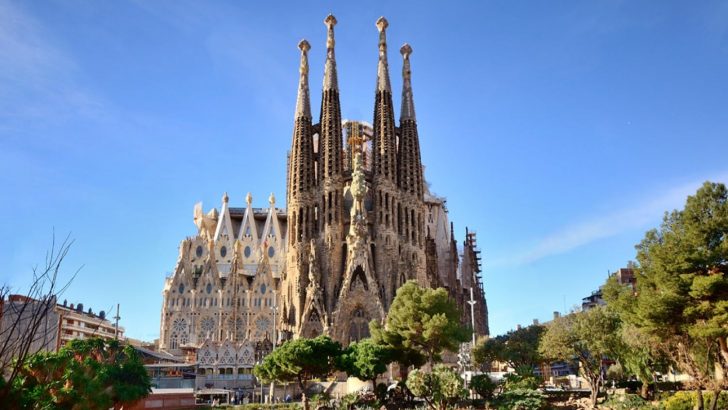It’s unlikely that there’s a more conspicuous or remarkable example of Catholic art in the modern world than Antoni Gaudi’s Sagrada Familia basilica in Barcelona, described by Pope Benedict in 2010 as standing “as a visible sign of the invisible God, to whose glory these spires rise like arrows pointing towards absolute light and to the One who is Light, Height and Beauty itself”.
The basilica’s story has been a long and staggering one since construction began in 1882; less than a quarter of the project was complete by 1926, and even in 2010 it was thought to be only half-finished. Many will have had little hope of seeing the church finished in their lifetimes.
In recent years, however, advances in stone-cutting technology have transformed the pace of construction, and there is good reason to believe Sagrada Familia will be complete by 2028, if not by the anniversary of Gaudi’s death in 2026. A July 4 post at blog.sagradafamilia.org raises and answers in enthralling style the question of whether today’s church builders are truly following Gaudi, while two days earlier @sagradafamilia tweeted a video of the 18-tonne, 7.5m high and 4.25m wide ‘Cross of Glory’ being put in position on the basilica’s Passion façade. Remarkable and faithful progress indeed seems to be being made.
Steady stream of snippets
Less ostentatious but in its own way no less important an achievement of Catholic art is the body of work penned in the 1950s and 1960s by the American author Flannery O’Connor, and those wishing to learn more about the remarkable writer of such tales as ‘A Good Man is Hard to Find’ and ‘Wise Blood‘ could do worse than follow @beataproduction, the Twitter account for the documentary Uncommon Grace: The Life of Flannery O’Connor.
Among other things, the account offers a steady stream of snippets of wisdom from the Georgia Catholic, ranging from “conviction without experience makes for harshness” and “the first product of self-knowledge is humility” to “you will have found Christ when you are concerned with other people’s sufferings and not your own”.
Lest these feel like the kind of wise sayings that almost anyone could have said, there are no shortage of observations there that could only have come from Flannery’s own pen, with one especially cutting and thought-provoking one last week focusing on the price we pay when we take our eyes off Christ.
“In the absence of this faith now, we govern by tenderness. It is tenderness which, long since cut off from the person of Christ, is wrapped in theory,” she wrote, continuing, “…it ends in forced-labour camps and in the fumes of the gas chamber.”
The account links to clips and articles too, including to, for example, such pieces as an americamagazine.org analysis of her relationship with Robert Giroux, ‘Flannery O’Connor and the Catholic editor who nurtured her career’.
Contemplation as it used to be
Also of interest on the America site of late is a review by Greg Hillis – @gregorykhillis on Twitter – of Paul Quenon’s In Praise of the Useless Life ‘Review: A Trappist monk tells of a life worth living’.
Hillis writes of how “Western society is one that increasingly devalues the importance of leisure, the kind of leisure that is open to a contemplation that gives meaning to existence. We have instead structured our lives around ‘useful’ work, giving little or no time to the silence required for contemplation.”
Viewed with the eyes of a work-obsessed culture, the monastic life seems meaningless, Hillis says, but Bro. Paul’s book, if his reading of it is fair, shows that it can be anything but, and can have real lessons for us all.
Finally, and recalling Flannery’s comments on how our culture is one where sentiment has replaced a reasoned Faith and human lives are deemed disposable, it’s worth taking a look both at David Mills’ recent aleteia.org sampler from the writings of Dietrich von Hilderbrand, ‘5 insights on patriotism from an anti-Nazi hero’ , and at Charlie Camosy’s thefederalist.com analysis ‘7 reasons it is deeply misleading to claim Americans support Roe v Wade’.


 Greg Daly
Greg Daly Sagrada Familia basilica
Sagrada Familia basilica